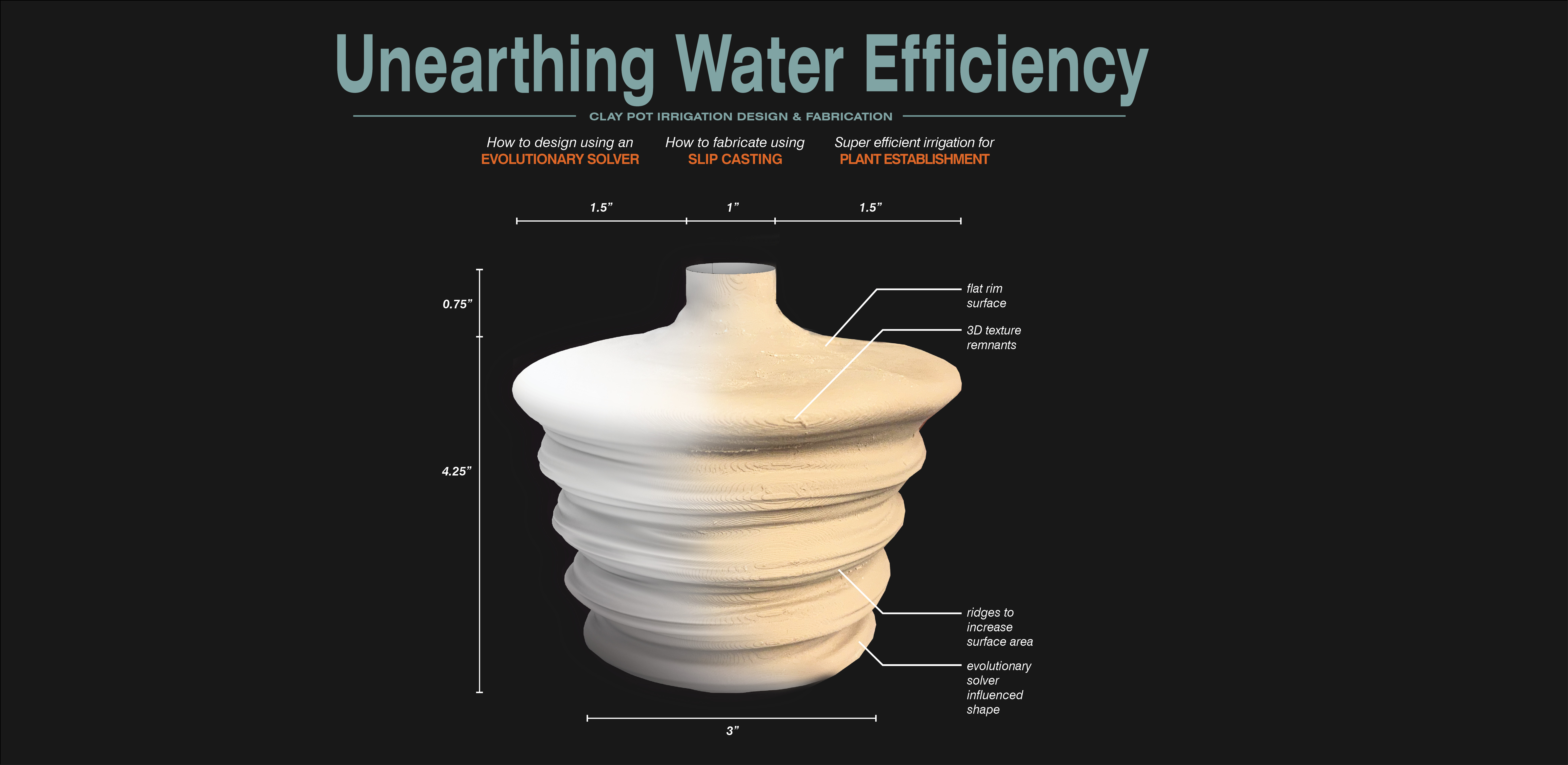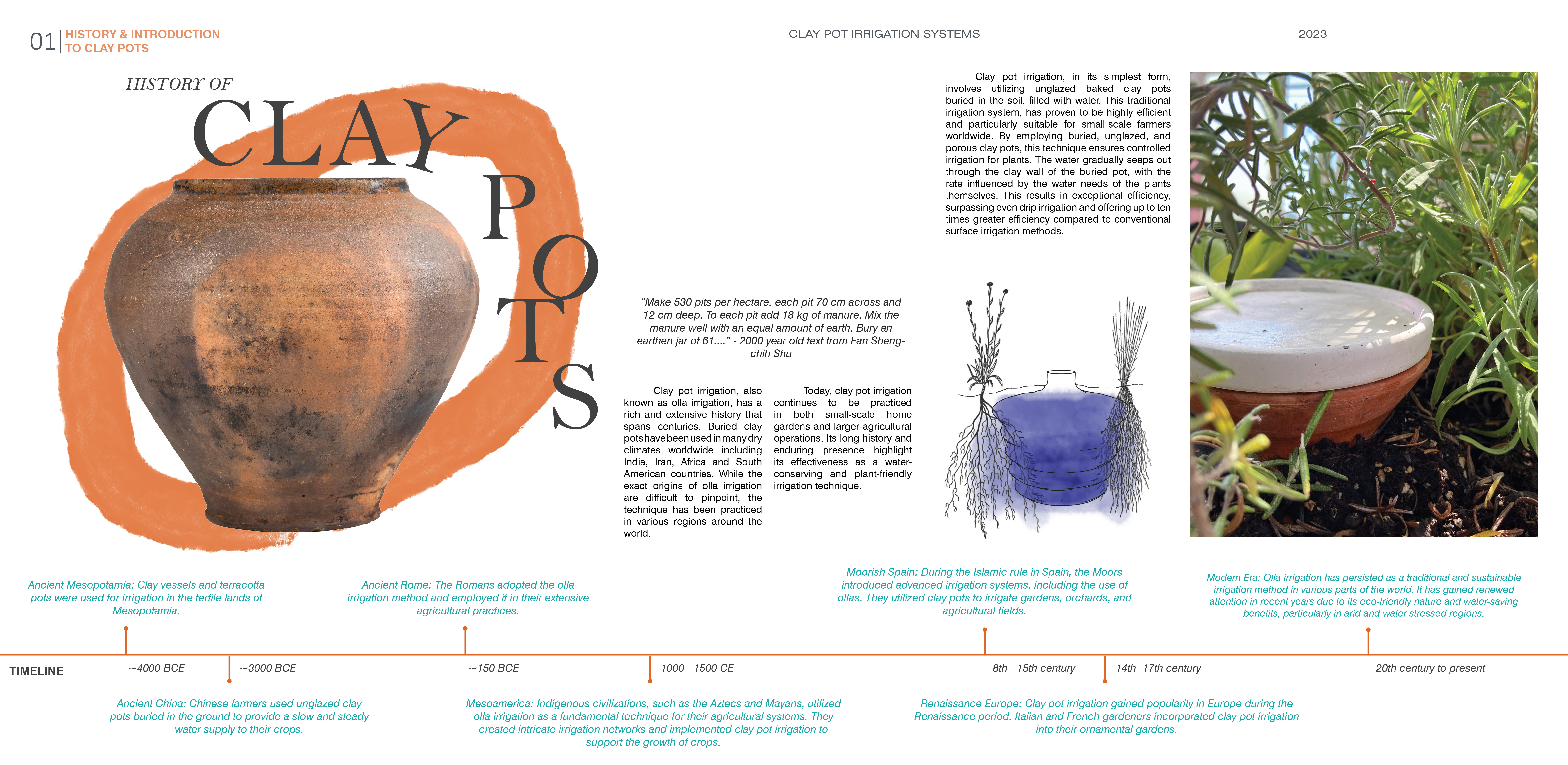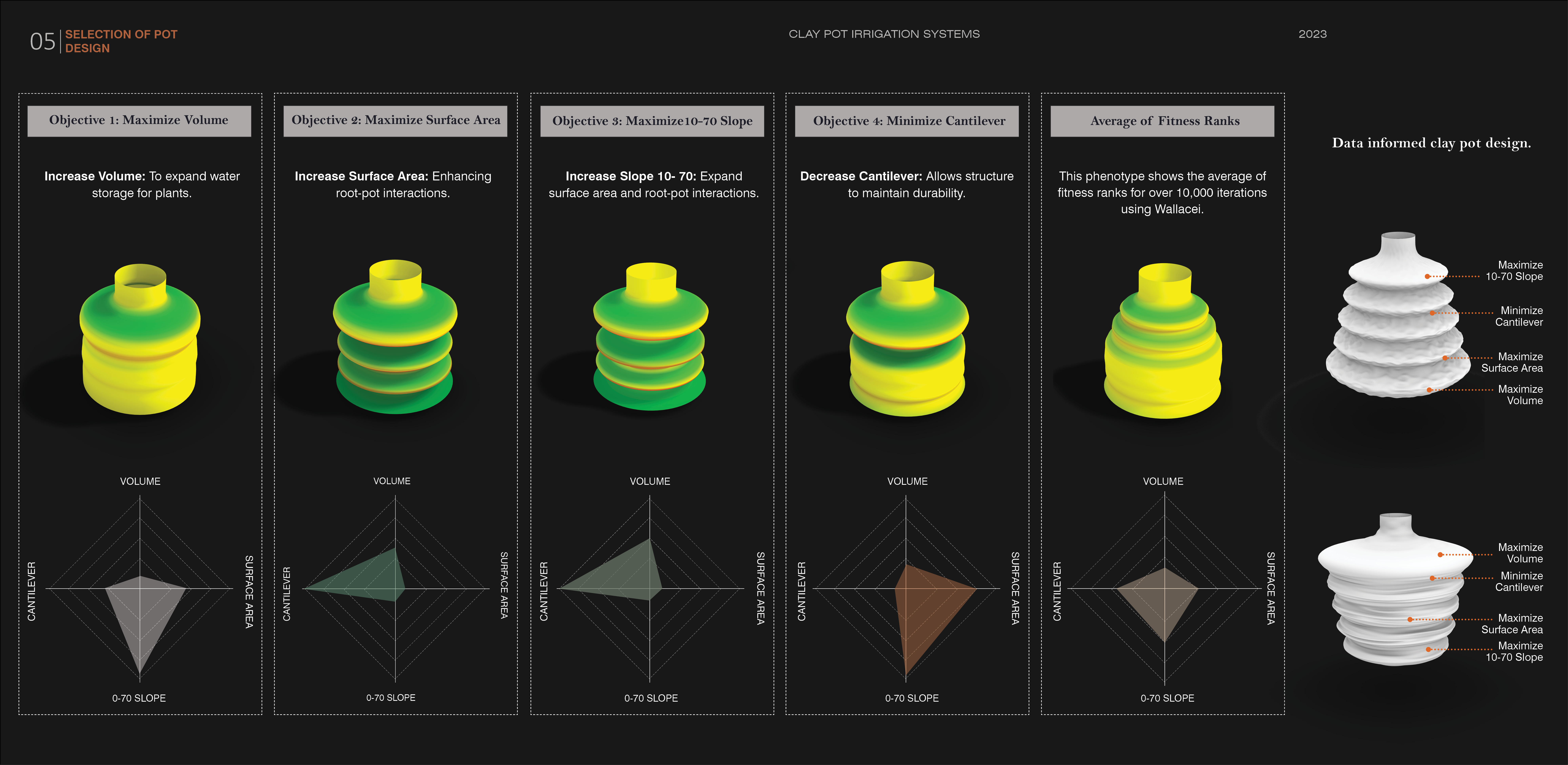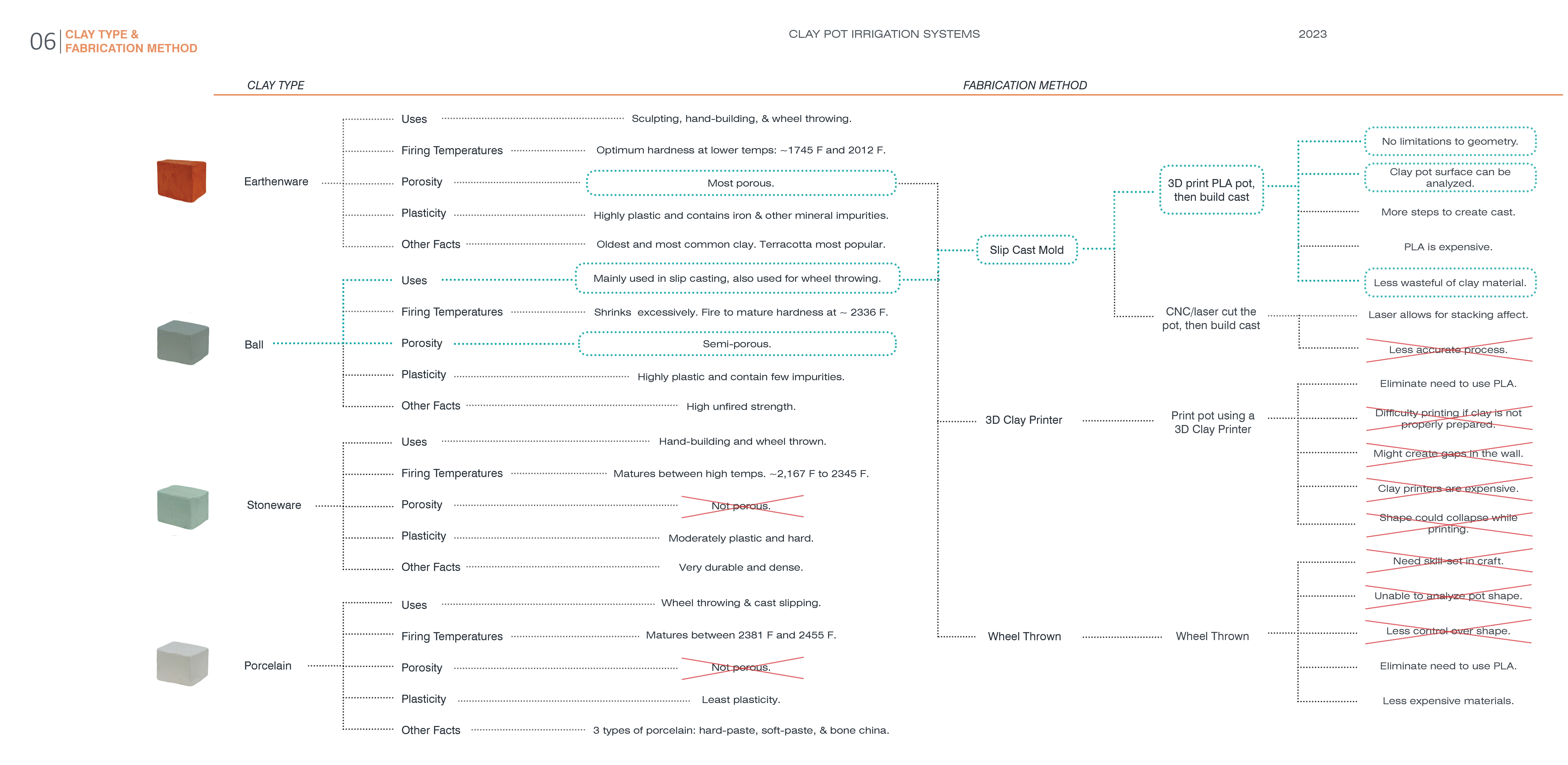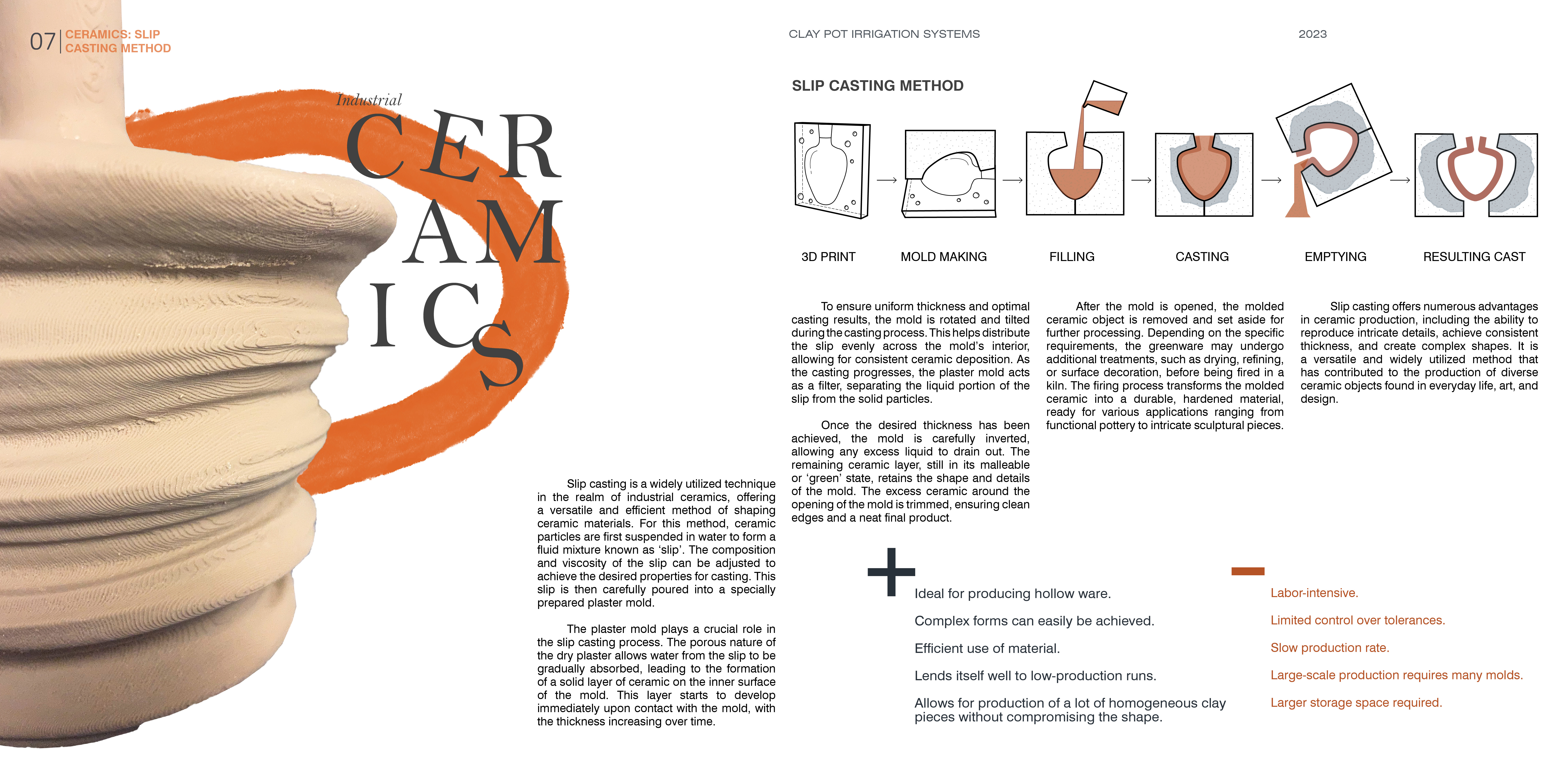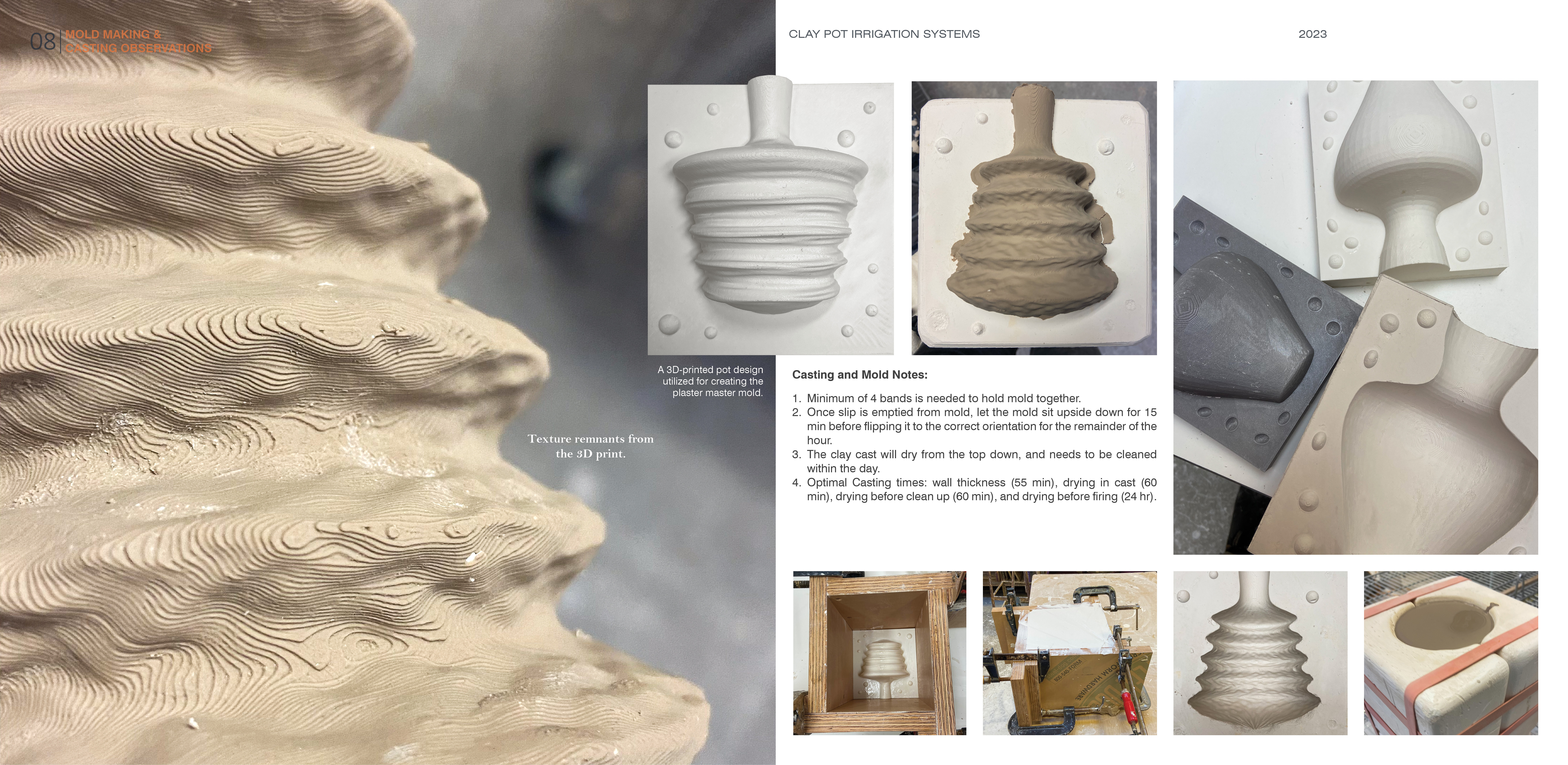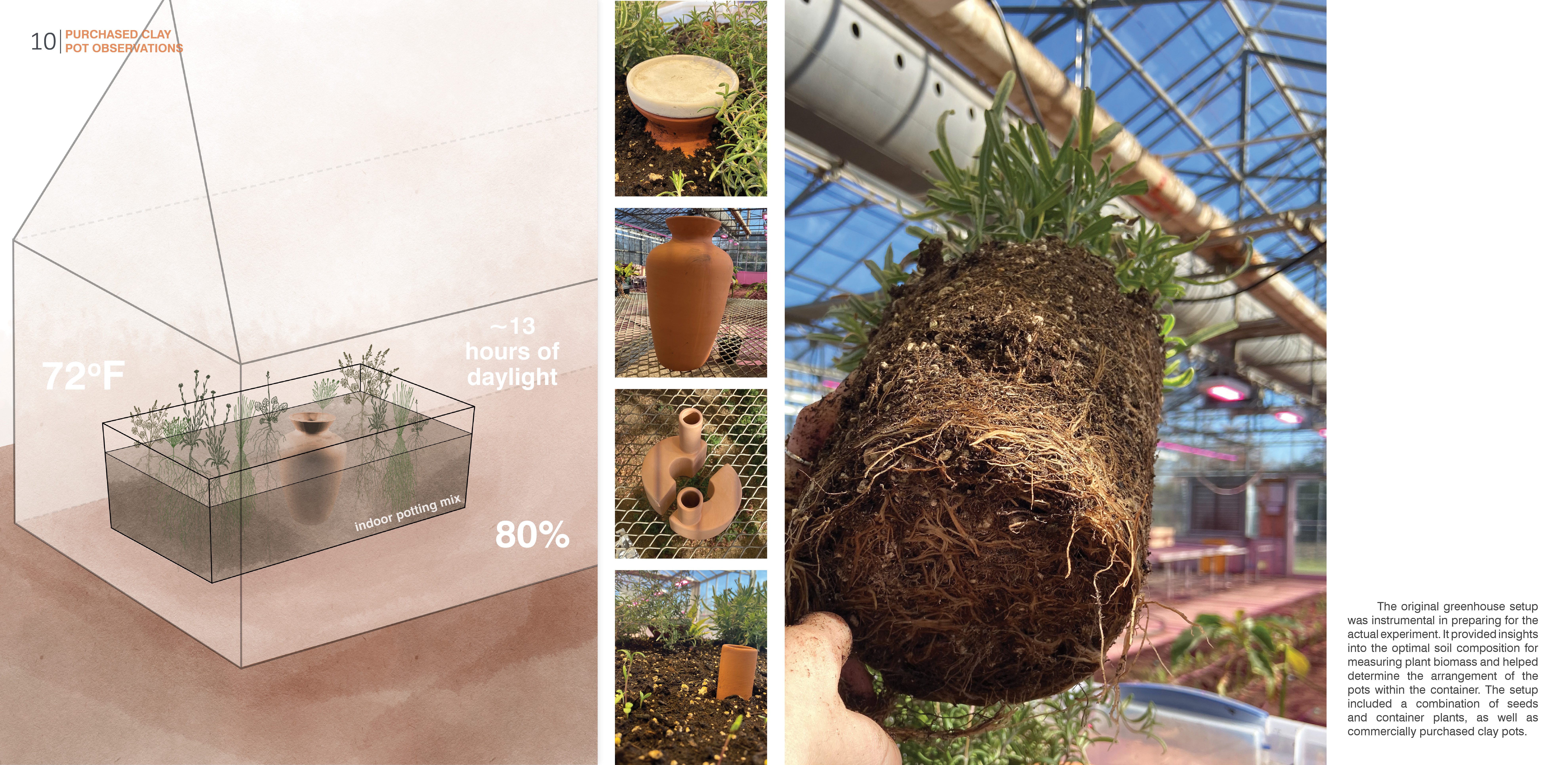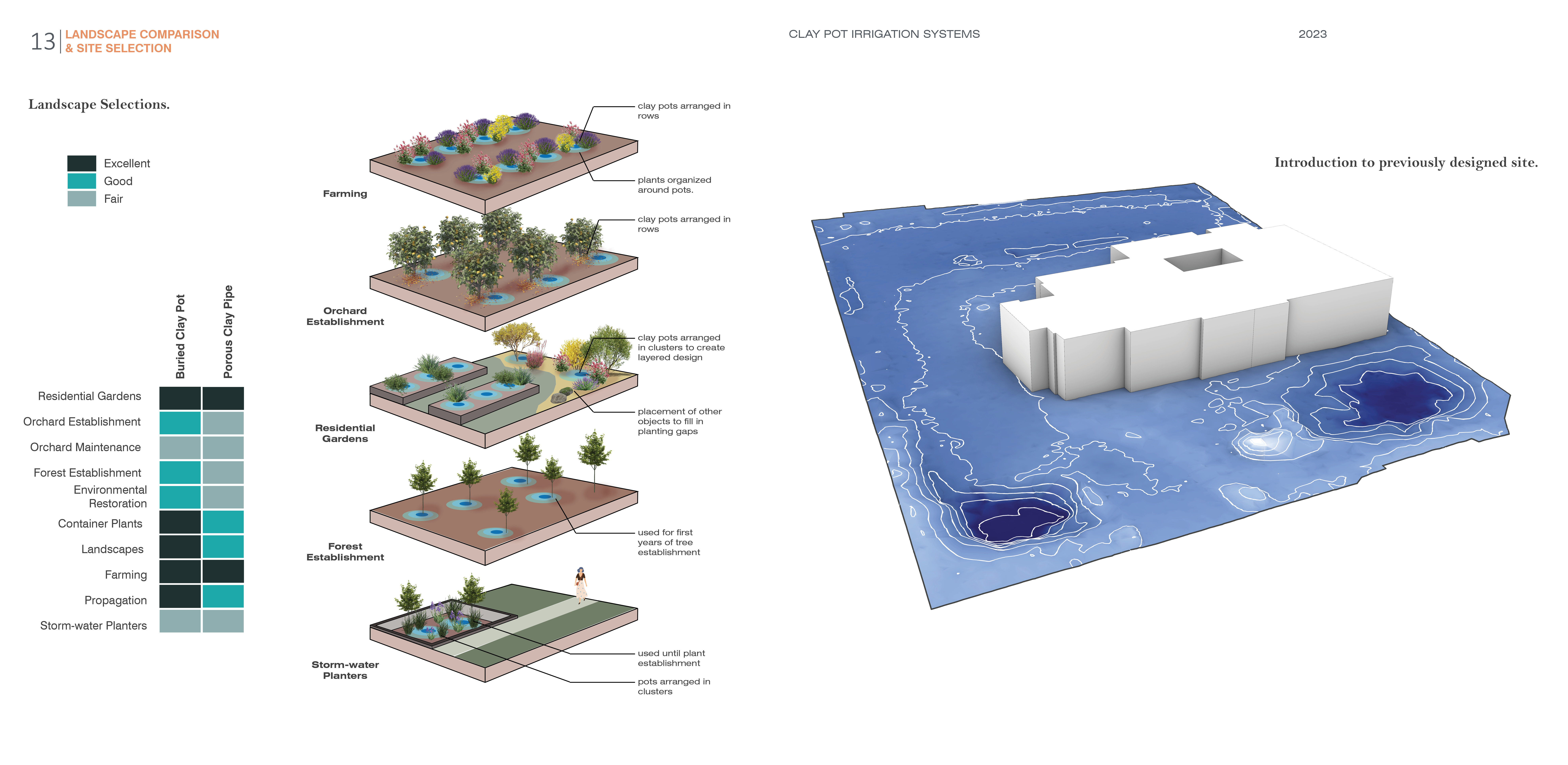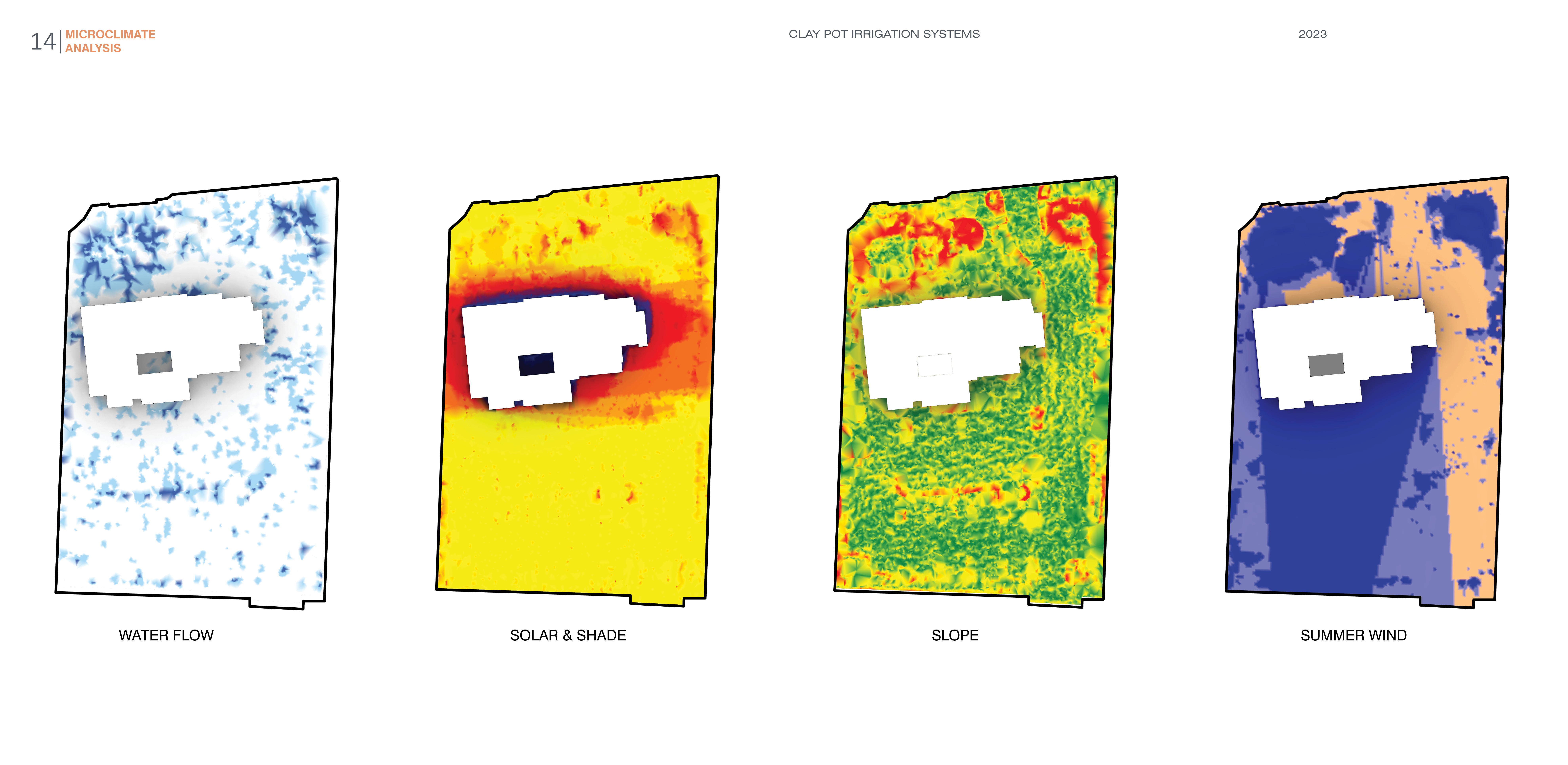Unearthing Water Efficiency: Clay Pot Irrigation Design & Fabrication
Honor Award
Research
Eugene, Oregon, United States
Hannah Chapin, Associate ASLA;
Faculty Advisors:
Ignacio Lopez Buson;
University of Oregon
Very interesting topic and design approach, with the blending of art and environmental sustainability. A clear and well described study that produces real benefits and identifies a pervasive issue and prototypes a viable solution that could be implemented at scale. Clear process clearly presented.
- 2023 Awards Jury
Project Statement
This project explores a vernacular technology in the face of climate change, focusing on the efficiency of buried clay pot irrigation systems. These self-regulating systems reduce water use by 90% and promote plant survival during droughts. Leveraging 3D printing and algorithmic design, this project iteratively designs optimal forms considering water distribution, volume, and structural integrity. Computational modeling incorporates micro-climate variations for dynamic clay pot irrigation layouts. Pushing design boundaries and embracing digital fabrication, the project addresses a pressing climate challenge, advances landscape architect’s technologies, and serves as a cost-effective model for future adaptation.
Project Narrative
Climate change will alter growing conditions, necessitating adaptive irrigation practices. Landscape architects, trained in systems thinking, ecological planning, and water conservation knowledge, must urgently respond to landscapes facing water scarcity. To address future droughts, efficient irrigation systems, like buried clay pots, can be used and could enhance landscape design. These self-regulating irrigation systems are particularly efficient because the water flow rate varies with plant water demand. Plant survival and growth are dramatically increased with these systems, allowing for more robust plants that better tolerate drought.
This project aimed to establish an iterative design approach using digital technologies, like 3D printing, to enhance irrigation performance, reduce water usage, and improve land management through the design of ceramic clay pots. While clay pots could be purchased, 3D printers provided opportunities for exploring pot design and efficiency. Multiple casts of homogenous pots were made using 3D-printed PLA master molds, ensuring greater accuracy and reproducibility. The slip casting technique enabled the creation of complex shapes not achievable with conventional methods.
Employing an evolutionary solver, Wallacei, this project utilized data analysis to select desired solutions for the final pot design. This approach prioritized repetitions tailored to plant water demands, increased surface area for root interactions, and enhanced pot durability. By considering multiple objectives and constraints, the algorithmic tool identified more suitable combinations of form and size parameters. Ultimately, two pot designs were selected for testing in a greenhouse experiment, where they were compared to a conventional pot form. Although the pots contained equal volumes of water, their surface areas varied.
The greenhouse experiment utilized four containers filled with sand and seeded with roemer's fescue grass to evaluate the different pot designs. Two pots from each design were allocated to three containers, while the fourth container served as a control without a clay pot. The containers were uniformly watered by pouring water into the pots or by spraying the same amount of water into the control container. This research aims to determine which pot design yields the highest biomass of native grass, providing insights into the project's success. While the research results are still pending, the collected information will inform the application of new tools to a vernacular technology. However, initial observations indicate a higher grass density within a 10-inch radius of the clay pots, suggesting potentially lower porosity than expected. Secondly, solar exposure significantly impacts the grass's growing conditions throughout the day. Future studies should aim for consistent solar exposure to optimize growing conditions and conduct further sampling for a more comprehensive analysis.
During this project's final stage, digital technologies and computational modeling were employed to assess micro-climate variations at a pre-existing site. This analysis encompassed water flow patterns, sun exposure, shading effects, and slope considerations, which guided the strategic placement and layout of the clay pots. The objective was to create a dynamic design that seamlessly adapts to the specific site conditions, optimizing water efficiency, and providing a hybridized irrigation approach.
